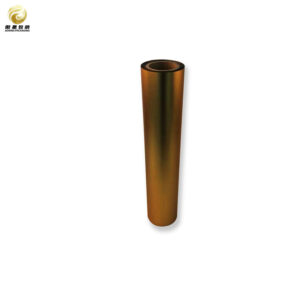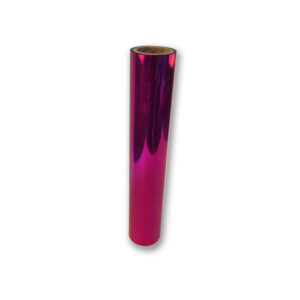Película PET de bajo brillo
| Producto | Película PET mate |
| Material | PET + color+ capa de aluminio / PET + aluminio + capa de color |
| Espesor | 12~188um |
| Opción de color | Rojo, azul, púrpura, verde, oro, amarillo, rosa, arco iris, etc. |
| Anchura y longitud | Anchura:500~1800mm Longitud:Personalizada |
Descripciones detalladas
Product Description: Low-Gloss PET Film
Introducing our premium Low-Gloss PET Film, a versatile and high-performance material designed to meet the demanding needs of various industries. Engineered from high-quality polyethylene terephthalate (PET), this film combines exceptional durability with a sophisticated low-gloss finish, making it an ideal choice for applications where aesthetics and functionality are paramount.
Key Features:
1. Superior Clarity and Optical Properties: Our Low-Gloss PET Film offers excellent transparency while minimizing glare, ensuring that your products maintain their visual appeal without the distraction of excessive shine. This feature is particularly beneficial for packaging applications where product visibility is crucial.
2. Enhanced Durability: The robust nature of PET ensures that our film is resistant to tearing, puncturing, and environmental stressors. This durability translates into longer-lasting products, reducing the need for frequent replacements and contributing to overall cost-effectiveness.
3. Chemical Resistance: The Low-Gloss PET Film exhibits remarkable resistance to a wide range of chemicals, making it suitable for use in environments where exposure to solvents or other harsh substances is a concern. This characteristic ensures that the integrity of the film remains intact over time.
4. Lightweight and Flexible: Despite its strength, our Low-Gloss PET Film is lightweight and highly flexible, allowing for easy handling and application across various substrates. This flexibility makes it an excellent choice for both rigid and flexible packaging solutions.
5. Eco-Friendly Option: As part of our commitment to sustainability, our Low-Gloss PET Film is fully recyclable, contributing to reduced environmental impact. By choosing this product, you are not only investing in quality but also supporting eco-conscious practices.
6. Customizable Solutions: We understand that every project has unique requirements. Our Low-Gloss PET Film can be tailored to meet specific thicknesses, widths, and finishes, ensuring that you receive a product perfectly suited to your needs.
Applications:
The versatility of our Low-Gloss PET Film makes it suitable for a wide array of applications across multiple sectors:
– Packaging: Ideal for food packaging, cosmetics, electronics, and more, where both protection and presentation are essential. – Labels and Stickers: Perfect for creating labels that require durability without compromising on aesthetic appeal. – Graphic Arts: Suitable for printing applications where low-gloss finishes enhance visual clarity while minimizing glare. – Industrial Uses: Effective in protective coverings or as a component in composite materials due to its strength and chemical resistance.
Conclusion:
Our Low-Gloss PET Film is engineered for exceptional durability and clarity, making it an ideal choice for applications ranging from packaging to labeling. As a trusted manufacturer, we ensure that our products adhere to the highest standards of quality and performance. This film is not only lightweight but also resistant to moisture and chemicals, providing an excellent barrier that enhances product longevity.
For businesses looking to optimize their supply chain, we offer competitive bulk buy options that allow you to purchase our Low-Gloss PET Film at wholesale prices. Our commitment as an exporter means that we can efficiently deliver large quantities to meet your production demands, regardless of your location. We understand the importance of flexibility in today’s market; therefore, we also provide OEM services tailored to your specific requirements.
When you choose our Low-Gloss PET Film, you are partnering with a reliable supplier dedicated to delivering exceptional value. Our bulk pricing structure ensures that you receive the best possible rates without compromising on quality. Whether you are a small business or a large corporation, our solutions are designed to scale with your needs.
In summary, our Low-Gloss PET Film is the perfect choice for businesses seeking a high-quality product from a reputable manufacturer in China. With our extensive experience as a producer and exporter, we are well-equipped to support your operations with reliable supply and competitive pricing. Contact us today to learn more about how you can benefit from bulk purchasing options and elevate your product offerings with our superior film solutions.








